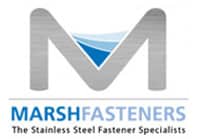Our Products
Stainless Steel Material Market:
The Nickel Institute, in support of nickel and nickel-containing materials, supports technical information transfer with technical consultants, web-based learning tools and published technical literature. It maintains an extensive web site with technical, sustainable development, health, environment, recycling, product stewardship, and sector-specific information.
www.nickelinstitute.org - for information on all important uses of nickel, including how nickel enables sustainable development.
NiPERA commissions and manages science contracts, interacts with science peers and institutions, and interacts with regulatory and other stakeholder groups.
www.nipera.org - for information on the human health science and environmental science of nickel and nickel compounds
www.lme.com - The London Market Exchange. The London Metal Exchange is the world's premier non-ferrous metals market with highly liquid contracts and a worldwide reputation.
www.stainlesswater.org - for information on the effective use of nickel-containing stainless steels in water production, treatment and use
www.stainlessarchitecture.org - for information on the effective use of nickel-containing stainless steels in modern architecture, building and construction
www.hygienicstainless.org - for information on the effective use of nickel-containing stainless steels in the food and beverage industry
www.nickelmagazine.org - for the Nickel Institute's regular magazine reporting new developments in the use of nickel and nickel-containing products
http://www.stainless-steel-world.net/index.asp - A variety of information from the metal markets and mines.
http://www.AZoM.com - #1 engineering materials knowledge-base on the internet. Information for all types of stainless steel and engineering materials.
http://www.weldingengineer.com/Stainless%20Steel.htm - Information on welding different types of stainless steel.
Finishing:
https://www.mmsonline.com/articles/passivation-of-stainless-steel-parts-the-recipe-for-success -Passivation of Stainless Steel article.
Standards Organizations:
http://www.astm.org Organization that sets and develops international standards for materials.
http://www.ansi.org - Organization that sets industry standards.
Why is Stainless Steel Stainless?
What It Is and How It Works!
What Is Stainless Steel and Why Is it Stainless?
In 1913, English metallurgist Harry Brearly, working on a project to improve rifle barrels, accidentally discovered that adding chromium to low carbon steel gives it stain resistance. In addition to iron, carbon, and chromium, modern stainless steel may also contain other elements, such as nickel, niobium, molybdenum, and titanium.
Nickel, molybdenum, niobium, and chromium enhance the corrosion resistance of stainless steel. It is the addition of a minimum of 12% chromium to the steel that makes it resist rust, or stain 'less' than other types of steel.
The chromium in the steel combines with oxygen in the atmosphere to form a thin, invisible layer of chrome-containing oxide, called the passive film.
The sizes of chromium atoms and their oxides are similar, so they pack neatly together on the surface of the metal, forming a stable layer only a few atoms thick. If the metal is cut or scratched and the passive film is disrupted, more oxide will quickly form and recover the exposed surface, protecting it from oxidative corrosion. (Iron, on the other hand, rusts quickly because atomic iron is much smaller than its oxide, so the oxide forms a loose rather than tightly-packed layer and flakes away.) The passive film requires oxygen to self-repair, so stainless steels have poor corrosion resistance in low-oxygen and poor circulation environments. In seawater, chlorides from the salt will attack and destroy the passive film more quickly than it can be repaired in a low oxygen environment.
Types of Stainless Steel
The three main types of stainless steels are austenitic, ferritic, and martensitic. These three types of steels are identified by their microstructure or predominant crystal phase.
Austenitic:
Austenitic steels have austenite as their primary phase (face centered cubic crystal). These are alloys containing chromium and nickel (sometimes manganese and nitrogen), structured around the Type 302 composition of iron, 18% chromium, and 8% nickel. Austenitic steels are not hardenable by heat treatment. The most familiar stainless steel is probably Type 304, sometimes called T304 or simply 304. Type 304 surgical stainless steel is an austenitic steel containing 18-20% chromium and 8-10% nickel.
Ferritic:
Ferritic steels have ferrite (body centered cubic crystal) as their main phase. These steels contain iron and chromium, based on the Type 430 composition of 17% chromium. Ferritic steel is less ductile than austenitic steel and is not hardenable by heat treatment.
Martensitic:
The characteristic orthorhombic martensite microstructure was first observed by German microscopist Adolf Martens around 1890. Martensitic steels are low carbon steels built around the Type 410 composition of iron, 12% chromium, and 0.12% carbon. They may be tempered and hardened. Martensite gives steel great hardness, but it also reduces its toughness and makes it brittle, so few steels are fully hardened. There are also other grades of stainless steels, such as precipitation-hardened, duplex, and cast stainless steels. Stainless steel can be produced in a variety of finishes and textures and can be tinted over a broad spectrum of colors.
Visit us at www.marshfasteners.com for all of your stainless steel and marine grade fastener needs!!!
